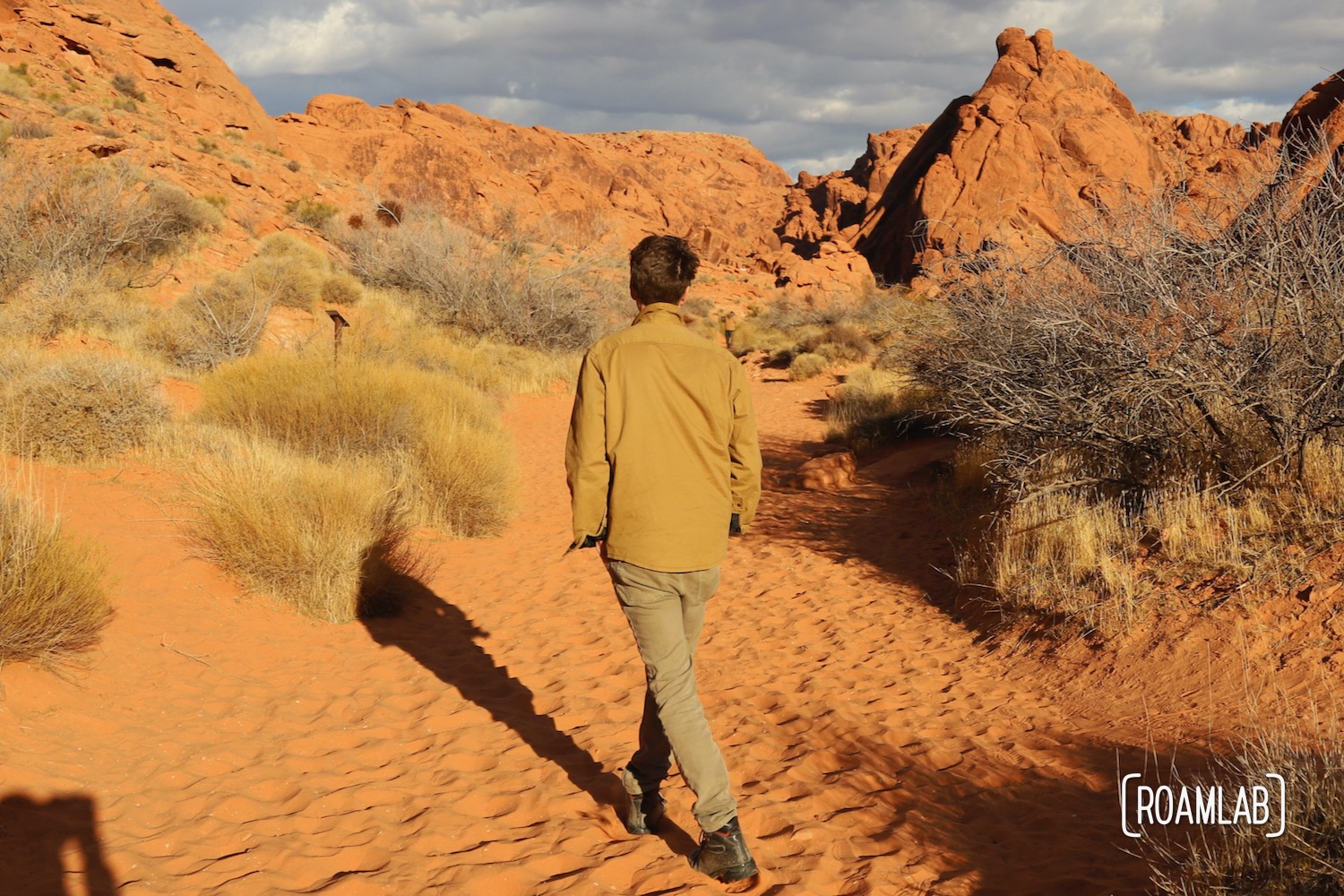Mouse’s tank refers to the natural water reservoir at the end of a ½ mile-long wash, but there is so much more to see while wandering between the red rock cliffs that flank this sandy trail. Prehistoric etchings cover the red sandstone walls, which is why the trail also goes by the name Petroglyph Canyon. This short, easy, level and accessible in-out trail is a popular choice for hikers of all skill levels in Valley of Fire State Park. With such a wealth of natural and historical points of interest, it’s worth the short diversion.
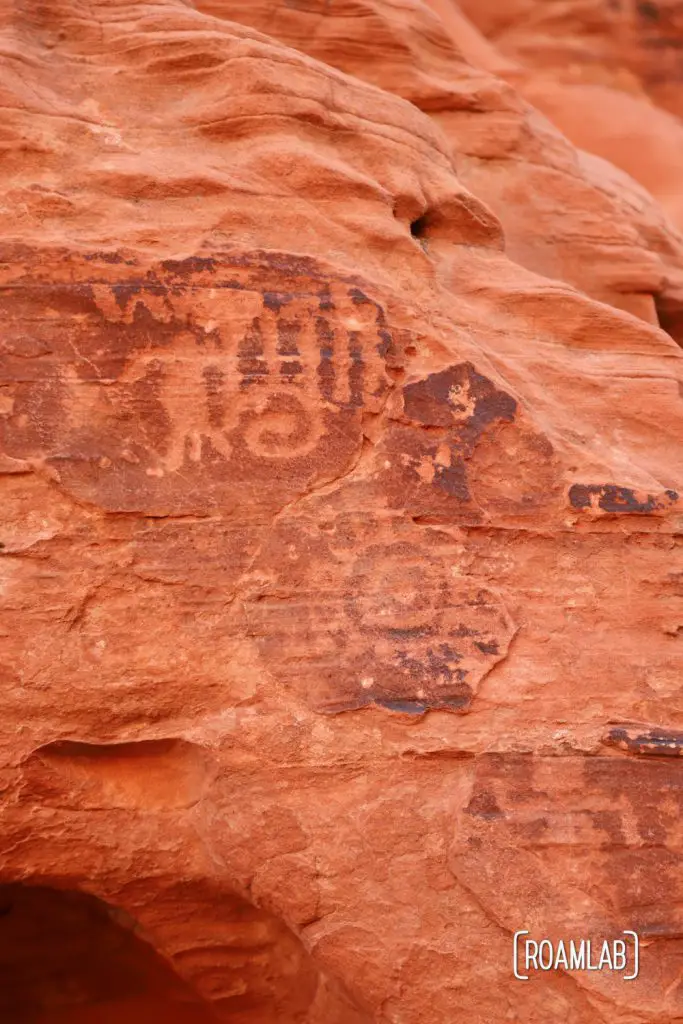
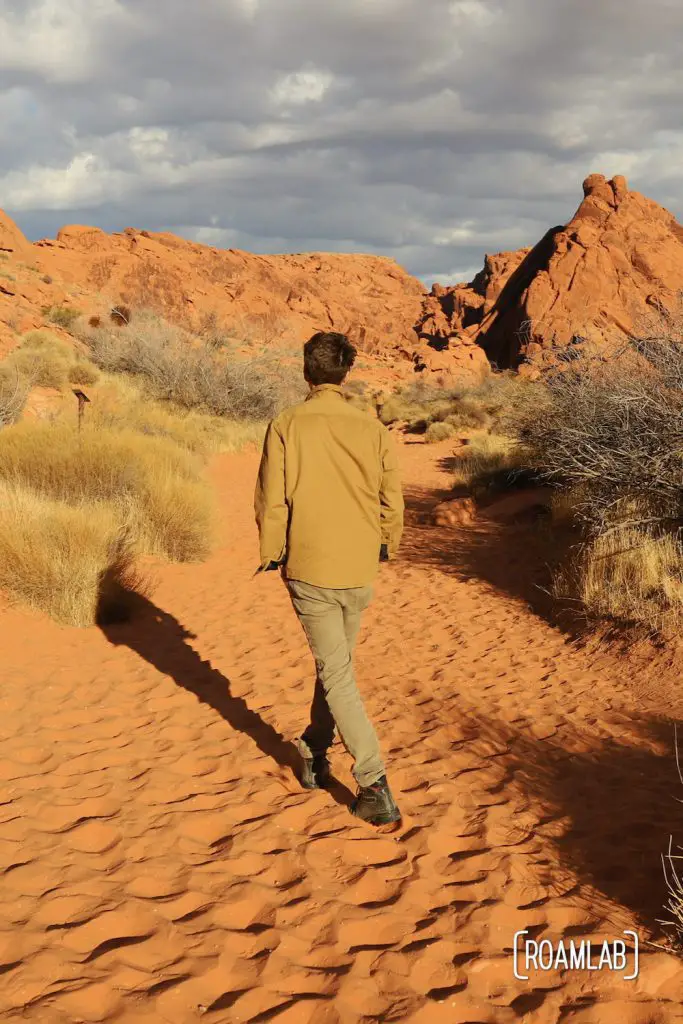
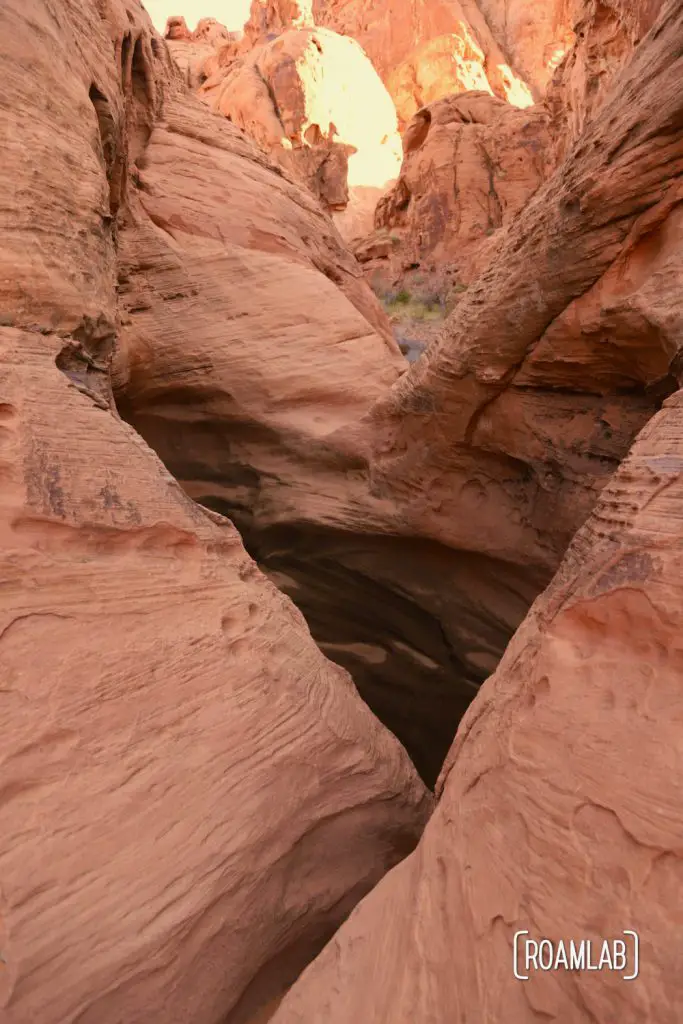
Petroglyph Canyon
Petroglyph Canyon is a relatively short sandstone alley that begins at the trailhead and funnels hikers like rainwater to its conclusion at Mouse’s Tank. The petroglyphs that give the canyon its name predominantly cover the red sandstone walls on the trail’s north side. Most of these stone etchings are the legacy of the Basketmaker culture, which lived in the area 2,500 years ago.
Despite their exposure to wind, rain, and unscrupulous visitors, many of these drawings are still easy to spot. A close inspection from any point on the trail is likely to identify at least a few etchings. But they are most easy to spot on a large rock along the north side, 1/8 of a mile down the trail. Like many petroglyphs along the trail, the etchings are so noticeable because the Basketmaker carvers penetrated through a layer of iron and manganese known as desert varnish, which forms a darker top surface on the rocks. The etchings expose the lighter sandstone beneath so that the symbols stand out dramatically against the dark desert varnish.
This unique drawing surface results from thousands of years of leaching and evaporation, which is why these prehistoric petroglyphs continue to stand out. So, respect these remarkable natural phenomena paired with the petroglyph makers’ rich traditions, and don’t add your own touches.
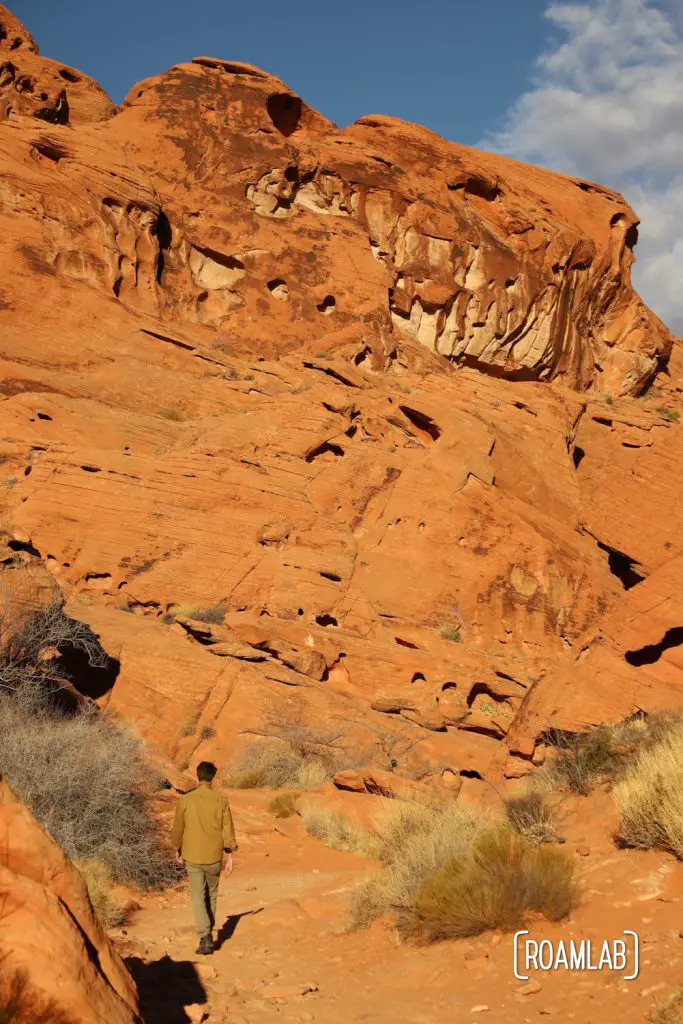

Mouse’s Tank
Mouse’s Tank marks the end of the trail and has nothing to do with mice. It is named after “Little Mouse”, a Southern Paiute Indian renegade who hid out in Valley of Fire in 1890s. For someone avoiding the law in such a harsh and unforgiving environment, you can understand why he may have stuck around here. This natural basin is one of the few reliable sources of water in the area.
Exposed as it is, one wouldn’t want to drink the water in Mouse’s Tank. But it is a remarkable oddity and a fun conclusion to the Petroglyph Canyon hiking trail. The sandstone cliffs that form this natural basin also limit access to see it. Fortunately, there is a slit in the rocks that water from the wash has worn away, allowing for a trail level peak into the Mouse Tank.
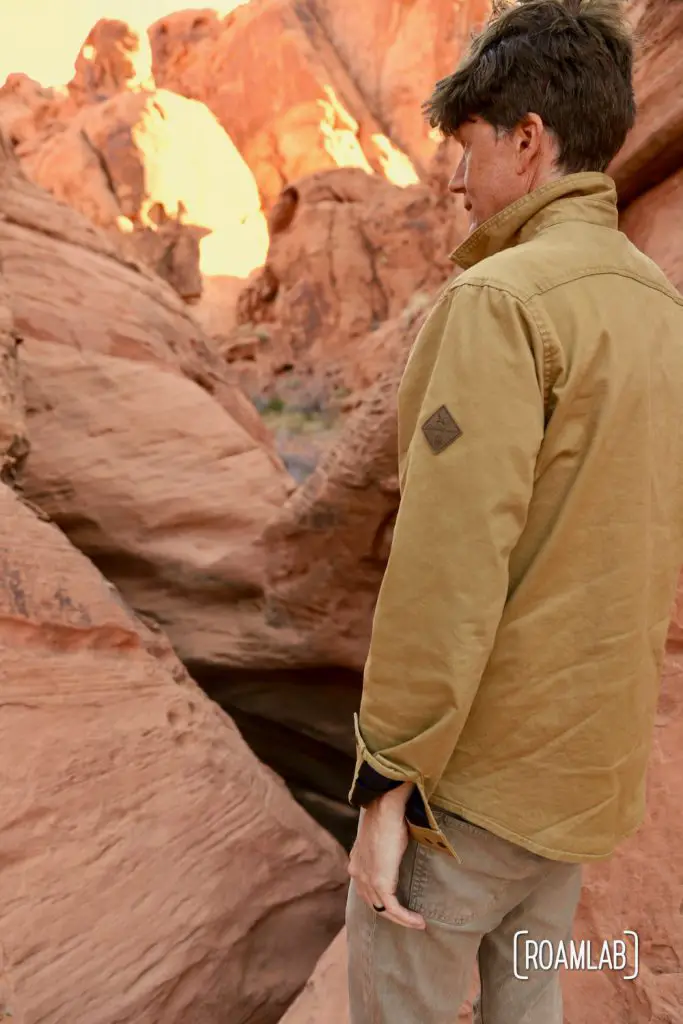
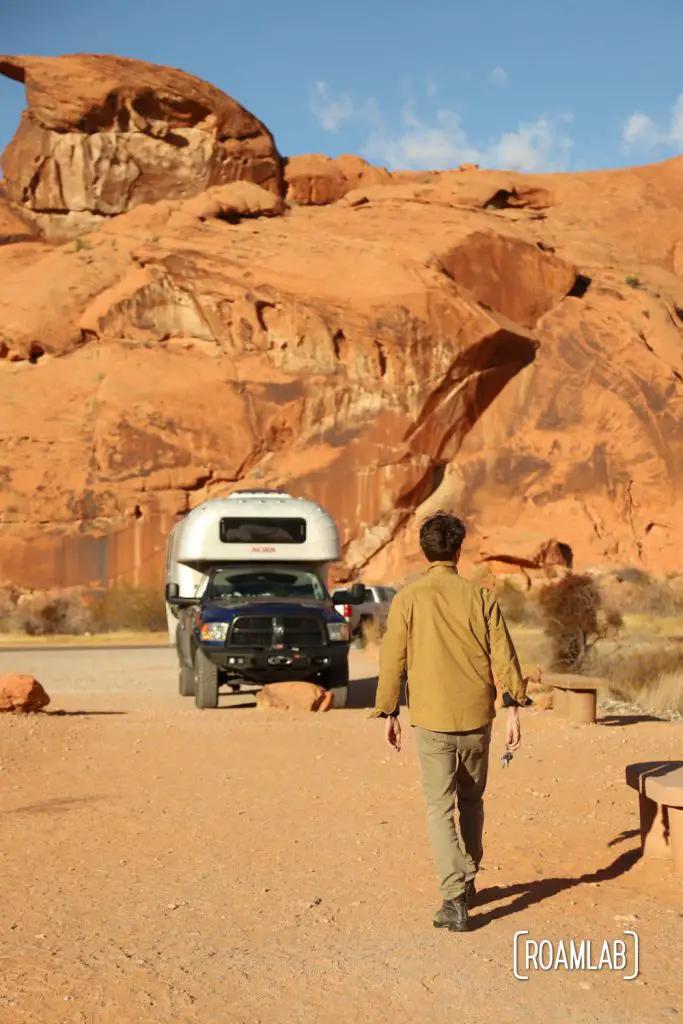
Reaching the Trailhead
Mouse’s Tank is an easy-to-reach and well-marked hiking trail. Along with a few information panels, the trailhead includes a parking lot, picnic area, and restrooms. The parking lot is one mile north of the Valley of Fire Visitors Center on White Domes (Mouse Tank) Road. Yes, like the trail, even the road has multiple names. The lot is the first large, sandy parking area to the east (on the right when heading north from the visitors center) and easy to spot.
Please, hike responsibly: It’s a thrill to be so close to the petroglyphs and red sandstone formations, but it is also important to treat this site with respect. We can enjoy these spots thanks to generations of other visitors who have treated the region with care. Please stay on the trail, don’t touch the petroglyphs, and don’t add any of your own.
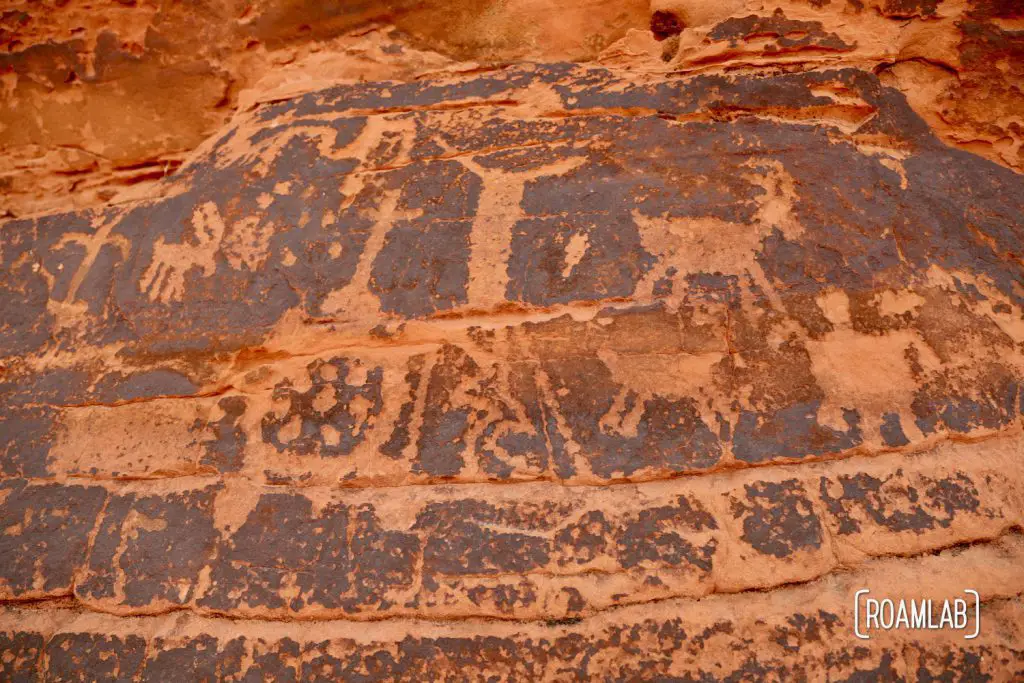
Our Experience
We arrived at Petroglyph Canyon shortly after sunrise. The parking lot was empty, and we took our time hunting down petroglyphs and marveling at rock formations. Despite the short length of the trail and starting as the only hikers, our relaxed pace meant that our isolation was disturbed when another couple overtook us at Mouse’s Tank. By the time we returned to the parking lot, the sun was fully up and we counted four other cars in the lot. I suppose that this trail can get pretty busy at peak hours, but it is such a fun trail that I don’t mind sharing it.


